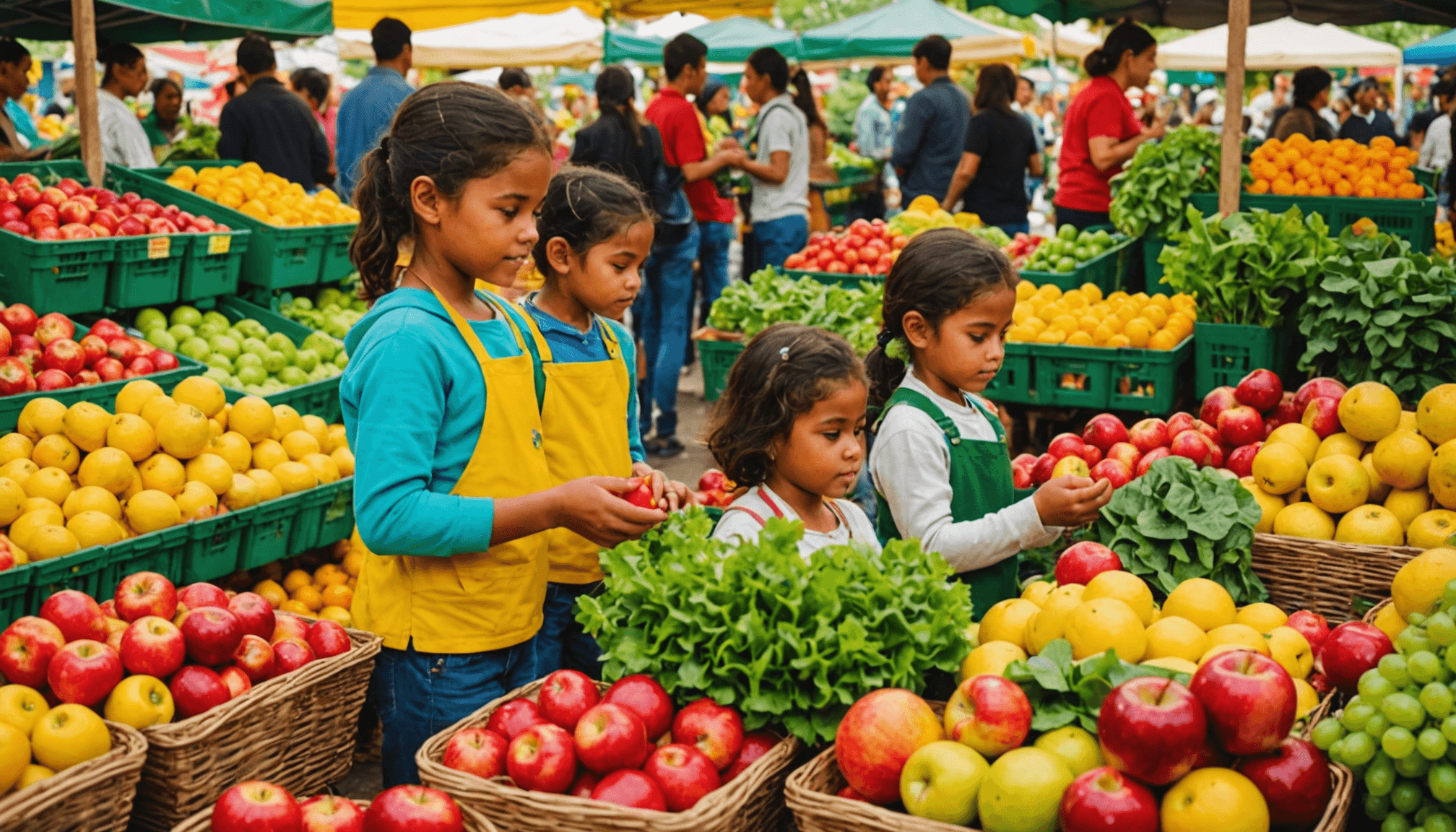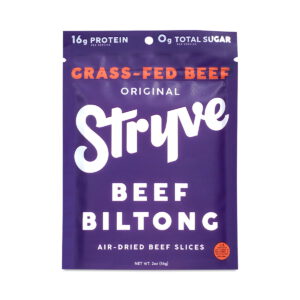- Essential cooking techniques for healthy meals
- Engaging kids in the kitchen
- Choosing nutritious ingredients together
- Kid-friendly meal planning
- Fun cooking activities for children
- Safety tips for cooking with kids
Grocery shopping is a crucial step in promoting healthy meals, especially when you involve your kids in choosing the ingredients they will work with. Teaching your child about nutrition starts in the aisles of your local grocery store or when you’re browsing online for the best deals. Here’s how to make grocery shopping a fun and educational experience while ensuring you load up on nutritious choices.
First, always create a list before heading out, whether it’s a physical trip to the store or an online shopping spree. This keeps your shopping focused and minimizes impulse buying, which can often lead to unhealthy choices. To make it more engaging, involve your kids in this process. Let them help choose items by creating a ‘yes’ or ‘no’ list based on what they have learned about healthy foods.
Second, opt for seasonal and local produce. Not only does it support local farmers, but seasonal fruits and vegetables are often fresher and more nutritious. Bring your kids along to local farmers’ markets where they can learn about different products. Examples of seasonal foods include:
- Spring: Asparagus, spinach, and strawberries
- Summer: Tomatoes, cucumbers, and peaches
- Fall: Pumpkins, zucchini, and apples
- Winter: Kale, carrots, and citrus fruits
These ingredients can be incorporated into various recipes for family cooking sessions that promote healthy meals.
When shopping, also consider going for organic options when possible, especially for items like spinach, strawberries, and other produce that are known to have higher pesticide residue. Teaching your children about the value of organic foods can foster a lifelong appreciation for healthy eating.
Vegans in the family? Be sure to explore a wide range of plant-based products, including legumes, nuts, seeds, and whole grains. Products like quinoa, chickpeas, and lentils are not only versatile but also budget-friendly options that are high in protein.
Budget-conscious shoppers should keep an eye out for sales and bulk options. Look for unprocessed cereals, pastas, and frozen fruits and vegetables for cost-effective choices that are still highly nutritious. Involving your child in the comparison of prices can be a great math lesson while creating awareness about budgeting.
Safety is paramount when it comes to food purchases. Always check expiration dates, avoid damaged packaging, and be cautious about food recalls. Educate your kids on how to select fresh produce: fruits should be blemish-free, and vegetables should be crisp. When shopping online, ensure you purchase food from reputable retailers to avoid issues related to food safety. Look for customer reviews and ratings before finalizing your purchase.
Incorporating these strategies can turn grocery shopping into an engaging family activity and set a positive example for your children, helping them become healthy eaters in the long run.
Engaging kids in the kitchen
When involving children in the cooking process, it is essential to create an environment that sparks their interest and encourages participation. Engaging kids in the kitchen fosters not only their culinary skills but also strengthens family bonds and stimulates a positive attitude towards healthy meals.
One effective method to engage children is by assigning them specific tasks that suit their age and skill level. For younger children, this might mean simple tasks like washing vegetables, stirring ingredients, or tearing lettuce for a salad. For older kids, they can graduate to more complex activities like measuring ingredients, chopping vegetables, or following recipes. These responsibilities help them feel accomplished and give them a sense of ownership in the cooking process.
Creating themes for cooking sessions can also add an element of fun. For example, you could have an Italian night where kids help make homemade pizza or pasta from scratch. Having a taste-test night with different spices or a “build your own” taco bar allows children to explore various flavors and textures, making healthy meals more enjoyable. Through these activities, children can learn about the benefits of different ingredients, which enhances their understanding of nutrition.
Additionally, incorporating educational elements can make cooking more engaging. Children can learn about food origins, nutrition facts, and cooking techniques through interactive experiences. You could create a short quiz about the vitamins found in various vegetables or even have them research a cultural dish and present it to the family. This not only keeps them engaged in cooking with kids but also broadens their culinary horizons.
Another fun way to engage children is through sensory experiences. Allow them to touch, smell, and taste different ingredients. Discussing how different herbs and spices can alter the flavor of food can lead to conversations about why certain ingredients are healthier than others. Letting children sprinkle herbs or mix spices can spark their interest in trying new foods.
Furthermore, consider using technology to enhance the cooking experience. There are numerous kid-friendly cooking apps and websites that provide recipes with engaging visuals and videos. Children can follow along in real-time, making it feel like a cooking show where they are the stars. This modern approach can resonate well, especially with tech-savvy kids.
Here’s a comparison of various engaging kitchen activities that can cater to different age groups:
| Activity | Age Group | Skills Developed |
|---|---|---|
| Washing vegetables | 3-5 years | Motor skills, hygiene awareness |
| Mixing ingredients | 5-8 years | Coordination, following instructions |
| Chopping vegetables with a kid-safe knife | 8-12 years | Knife skills, responsibility |
| Following a recipe independently | 12+ years | Planning, independence, critical thinking |
Engaging kids in the kitchen lays the foundation for a lifelong appreciation for cooking and healthy eating. By making the experience positive, interactive, and educational, you promote not only essential cooking skills but also a deep understanding of nutritious food choices.
Choosing nutritious ingredients together

Choosing nutritious ingredients is not just a chore; it can be a delightful adventure for both kids and adults. Let’s start with the basics: when you’re browsing the aisles or scrolling through an online store, aim to fill your cart with whole, unprocessed foods. Try to make at least half of your grocery list dedicated to fruits and vegetables, emphasizing vibrant colors and various textures. Here are some useful tips to make the experience enjoyable and educational:
Involve the Kids: Encourage your children to pick their favorite fruits and vegetables. Explain why each is healthy, turning the grocery trip into an informative session. For instance, you might explain how carrots are good for their eyesight or how bananas provide energy for their playtime.
Read Labels Together: Teach your kids how to read product labels. Show them what to look for regarding ingredients and nutrition facts. When choosing items like cereals or snacks, aim for whole grains and low sugar. This practice allows kids to automatically start thinking critically about what they consume. Here are some terms to aim for:
- Whole grain: Look for products that list whole grains as the first ingredient.
- Low sodium: Encourage low-sodium options for sauces and canned goods.
- Minimal ingredients: Fewer ingredients usually mean fewer preservatives and added sugars.
Explore New Foods: Turn grocery shopping into a culinary expedition by encouraging your children to pick out one new fruit or vegetable each week. This strategy not only diversifies your meals but also sparks curiosity in kids about different flavors and cooking methods. Whether it’s dragon fruit or bok choy, the more exposure they have, the more likely they are to try these foods in your family cooking sessions.
Choose Healthy Fats and Proteins: For those concerned about getting adequate proteins, involve your kids in selecting options such as lean meats, eggs, legumes, nuts, and seeds. Make sure to highlight healthy fats like avocados, olive oil, and fatty fish that are beneficial for their development. Teach them how these proteins and fats play crucial roles in their daily energy and growth.
Stick to Your Budget: Don’t shy away from discussing grocery budgets with your children. Teach them about comparing prices and buying in bulk for oft-used staples like rice, beans, or frozen vegetables. You can turn this into a friendly competition to see who can find the best deal on healthy snacks. This way, children learn that healthy eating doesn’t have to break the bank.
Emphasize Food Safety: Make sure your children know the importance of food safety when shopping. Teach them to select ripe produce by looking for firmness and vibrant colors while avoiding bruises. Explain the concept of “the dirty dozen”—certain fruits and vegetables that carry higher pesticide residues, making a case for organic options where needed. Discuss how to check expiration dates and inspect packaging to ensure quality. When shopping online, always ensure the retailer has a good reputation, and check customer reviews to avoid issues with food safety.
With these strategies in place, you can make the process of choosing nutritious ingredients an engaging family experience. By instilling healthy shopping habits in your kids, you’re cultivating not just knowledgeable eaters but also encouraging a family cooking culture that prioritizes wholesome, nutritious meals.
Kid-friendly meal planning
Planning meals that are both nutritious and appealing to children can cultivate a love for healthy eating. To create engaging and healthy meal plans, consider involving your children in the decision-making process right from the start. It’s important for them to feel included, which enhances their excitement about the meals they will help prepare.
Start by setting aside a specific time each week for meal planning. Gather your kids and explore what’s in season, what’s on sale, and what’s available in your pantry. Present them with a variety of healthy options categorized into different food groups: proteins, whole grains, fruits, vegetables, and healthy fats. This not just makes the decision process fun, but it also teaches them about balanced diets. For instance, ask them to pick one protein source, such as chicken or beans, one carbohydrate like brown rice or quinoa, and a couple of colorful vegetables. This balanced approach encourages critical thinking about their food choices.
Incorporating themes can add an element of excitement to your weekly meal planning. Consider designating specific days for different types of cuisine, such as Mediterranean Monday or Taco Tuesday. This not only diversifies meals but also exposes kids to new cultures and culinary practices. Encourage them to research simple dishes from the chosen cuisine and select recipes they’d like to try. For example, they may find joy in creating homemade falafel or experimenting with tacos filled with various vegetables.
An effective strategy is to create a visual menu board. Use pictures of foods and dishes to illustrate the meals they will prepare throughout the week. This is particularly helpful for younger children who might find visuals more engaging than written lists. You can divide the board into sections for breakfast, lunch, dinner, and snacks, allowing kids to see their contributions to the planning process.
Recipes can also be adapted to be kid-friendly. Take family favorites and incorporate healthier substitutions—such as swapping white rice for cauliflower rice or using Greek yogurt instead of sour cream. Discuss why these substitutions are beneficial, helping children understand how small changes can lead to healthier meals without sacrificing the taste they enjoy. Let them take the lead in picking out these adjustments.
Another vital aspect of meal planning is preparing snacks. Invite your children to brainstorm healthy snack ideas they would love to have on hand. Create a list of options like fruit kabobs, homemade popcorn, or yogurt parfaits. This not only offers healthier choices but also fuels their energy as they assist in cooking with kids. Engage them in making these snacks, providing them with opportunities to practice their cooking skills and develop their tastes.
Consider also developing a “family favorites” night where everyone’s top pick is included in the weekly meal plan. This allows kids to feel more in control of their food choices and shows them that their preferences matter. Encourage discussions around why these meals are favorites—are they flavorful, quick to prepare, or filled with memorable moments?
Additionally, teach your kids about portion control and balance. Explain the importance of not just eating healthy meals but also enjoying moderation. Encourage them to experiment with their meal portions during cooking sessions, allowing exploration on how they feel when they eat balanced meals.
With enthusiasm and creativity during the meal planning process, you can foster a strong connection between your children and healthy cooking. Providing them with opportunities to participate in making choices empowers them to develop lifelong habits that prioritize nutritious eating, fostering a household where healthy meals are the norm.
“When you involve your kids in meal planning, you’re not just nurturing their taste for healthy eating; you’re also creating lasting memories in the kitchen.”
Fun cooking activities for children

Fun cooking activities are an excellent way to keep children engaged in the kitchen while also fostering a magical culinary experience. By incorporating play into the cooking process, you enhance not only their culinary skills but also create cherished family memories. Start with simple challenges, such as a cooking race where everyone must prepare a part of the meal within a set time. This not only makes the process exciting but also teaches your children the value of teamwork and time management in the kitchen.
Another engaging activity could be a themed cooking day. Choose a theme that sparks your child’s interest—this could be a specific cuisine, like Italian or Mexican, or a color theme where all dishes must include blue (blueberries) and green (spinach) ingredients. This also provides an opportunity to teach them about culinary diversity and cultural appreciation through food.
Have fun with presentation, where kids can create “food art.” Allow them to arrange fruits and vegetables artistically on their plates, turning mundane vegetables into playful characters or vibrant landscapes. This not only encourages creativity but may also make trying new healthy foods more appealing. Displaying meals in this way can transform the dining experience into an enjoyable visual feast.
Hosting family cook-offs can also be amusing, where everyone has to come up with a creative dish using a common ingredient, say zucchini or quinoa. Judging can be based on creativity and presentation rather than just taste, which encourages kids to experiment without the fear of failure. It’s a playful way to instill confidence in their cooking abilities.
Consider involving your children in meal prep by dedicating certain family nights to deep-dive into specific cooking techniques. For instance, you might focus on mastering the art of grilling vegetables or baking bread. Tackling one technique per session allows kids to become familiar with various cooking skills while also keeping them engaged. Record these cooking sessions; later, you could create your own family recipe book showcasing the unique dishes you’ve crafted together.
Incorporating sensory experiences further enriches cooking with kids. Create a “spice station” where children can smell, touch, and taste various herbs and spices. Discussing how these flavors can transform dishes encourages them to explore and appreciate the nuances of different cuisines. You can later use these spices in the meals they helped plan, allowing them to see the direct impact of their choices.
- What are some simple cooking activities suitable for young children?
- Simple activities like washing vegetables, tearing lettuce, or mixing ingredients are perfect for young kids. These tasks help develop motor skills and instill a sense of responsibility in the kitchen.
- How can I make cooking more interactive for my kids?
- Try themed cooking days where kids can help create dishes from different cuisines. You can also encourage them to decorate their plates or create food art to make cooking a fun experience.
- What if my kids are picky eaters?
- Involve them in the cooking process; let them choose ingredients or help prepare meals. This empowerment can increase their willingness to try new foods as they feel a sense of ownership over the cooking process.
- How can we incorporate learning into cooking?
- Use cooking to teach kids about nutrition, mathematical concepts (like measuring ingredients), and cultural appreciation by exploring the origins of different dishes. You can also create quizzes related to the meals you prepare.
- What are some budget-friendly cooking activities?
- Plan meals around sales and seasonal produce. Encourage kids to help you compare prices and find ways to use pantry staples creatively, allowing them to learn about budgeting and resourcefulness.
- How can I help my kids appreciate food safety while cooking?
- Make food safety a priority by teaching kids to wash hands before cooking, checking for freshness when selecting ingredients, and understanding proper food storage. Involving them in these discussions fosters responsibility.
- What are some good cookbook recommendations for cooking with kids?
- Look for cookbooks specifically designed for children, such as “The Complete Cookbook for Young Chefs” or “Cooking Class: 57 Fun Recipes Kids Will Love to Make (and Eat!).” These books often include engaging illustrations and age-appropriate recipes.
Safety tips for cooking with kids
When exploring safety tips for cooking with kids, it’s essential to create a secure environment that not only fosters learning but also keeps everyone safe from potential hazards. One of the primary concerns in the kitchen is heat. Start by explaining the basics of stovetop and oven safety, emphasizing to children that they shouldn’t touch hot surfaces or handle hot pots and pans without proper protection. Investing in child-safe kitchen tools, such as oven mitts designed for smaller hands, can make a significant difference in their cooking experience.
Teach Knife Safety: If your child is old enough to handle knives, introduce them to safe chopping practices. Use kid-safe knives when possible and supervise their use closely. Demonstrate how to hold the knife properly, the importance of cutting away from the body, and the safest way to stabilize the food being cut. Establishing these habits can help prevent accidents while empowering them to assist in meal preparations.
Encourage Proper Hand Hygiene: Teach your kids the importance of washing their hands thoroughly before and after handling food. Make it a fun routine by incorporating songs or games while they scrub their hands. This reinforces hygiene and helps prevent foodborne illnesses.
Utilize Protective Equipment: Encourage your children to wear aprons to protect their clothes and remind them to avoid loose clothing that might catch on hot equipment. Also, consider providing any necessary safety goggles if you’re working with splattering liquids or when cutting ingredients that might cause irritation.
Spot Check for Allergens: Educate your children about food allergies and give them the responsibility of identifying potential allergens in the ingredients you use. This includes checking for things like nuts, dairy, or gluten which may affect family members or friends. Having them read labels fosters a sense of responsibility and awareness.
Keep Sharply Pruned: When preparing fresh produce, teach kids about the importance of rinsing fruits and vegetables thoroughly under running water to remove dirt and pesticides. Make it a habit to have a designated area for washing produce before heading into the cooking process. Involving them provides practical experience while ensuring the food is safe to eat.
Maintain a Clean Cooking Space: Instill the importance of cleanliness in the kitchen. Encourage your kids to wipe down surfaces before and after preparation, ensuring a hygienic space. Creating a routine around cleaning can help them understand the impact cleanliness has on food safety. You can turn this into a fun challenge by timing how quickly they can clean the counter or dish out ingredients properly.
Online Grocery Shopping Precautions: When sourcing ingredients online, emphasize the importance of purchasing from reputable retailers. Check expiration dates listed on product pages and read customer reviews, paying attention to any reports about food quality. Discuss the implications of not rushing or making impulsive online choices, reinforcing the idea of thoughtful shopping to ensure quality ingredients for healthy meals.
By integrating these safety tips into your family cooking sessions, you can create a reassuring environment that nurtures both the culinary skills and safety awareness of your children. This balanced approach not only enhances their culinary enthusiasm but also cultivates lifelong habits about health and safety in the kitchen.
New Customers Offer!
Free Gift for the new customer
$24 Value, When You Subscrib Visit Thrive Market












